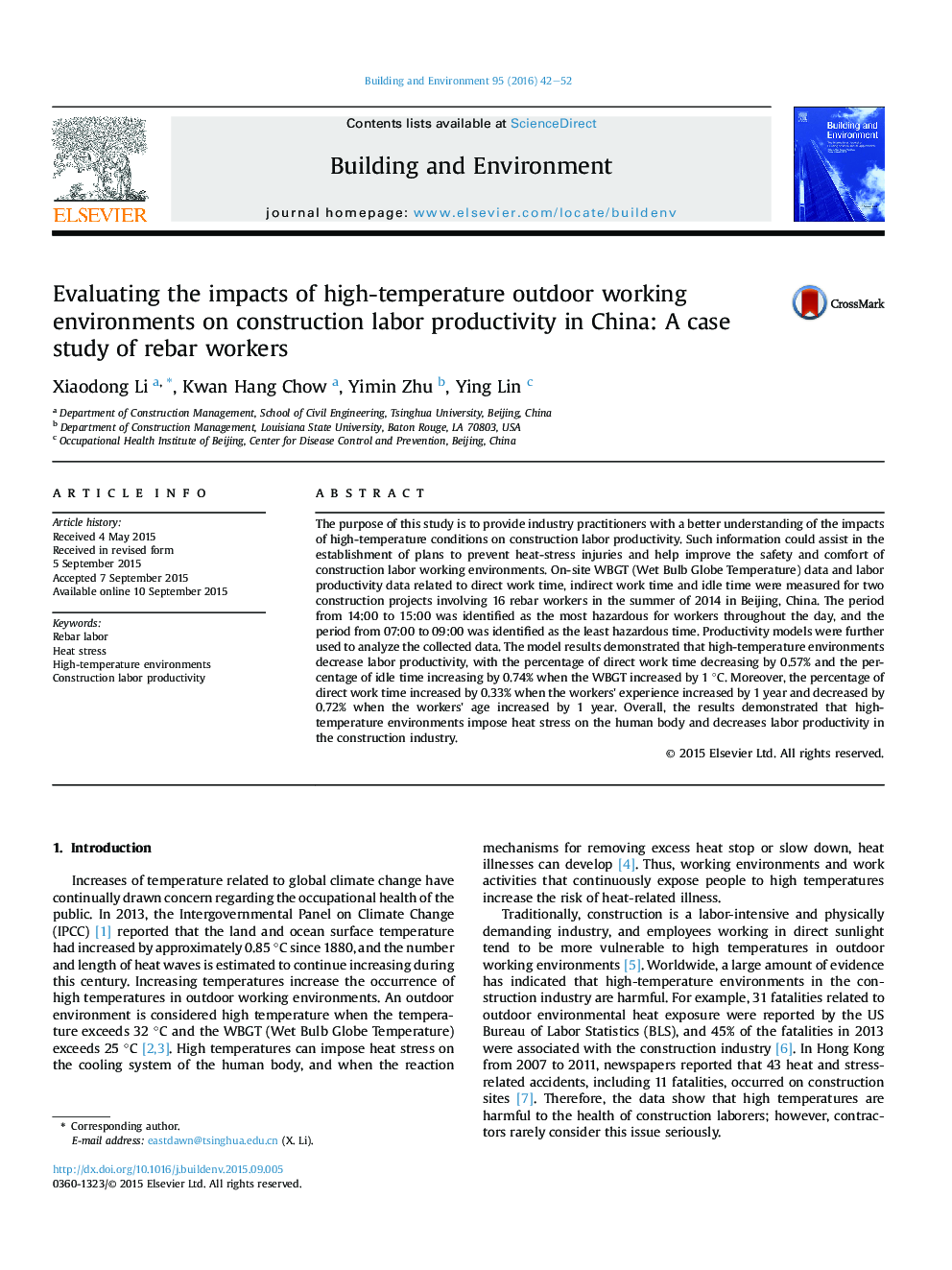| Article ID | Journal | Published Year | Pages | File Type |
|---|---|---|---|---|
| 247753 | Building and Environment | 2016 | 11 Pages |
•Impact of high-temperature on construction labor productivity was evaluated.•On-site WBGT and labor productivity data in two projects were collected.•14:00 to 15:00 time period was the most hazardous time for the laborers.•Direct work time decreased by 0.57% when WBGT increased by 1 °C.•Idle time increased by 0.74% when WBGT increased by 1 °C.
The purpose of this study is to provide industry practitioners with a better understanding of the impacts of high-temperature conditions on construction labor productivity. Such information could assist in the establishment of plans to prevent heat-stress injuries and help improve the safety and comfort of construction labor working environments. On-site WBGT (Wet Bulb Globe Temperature) data and labor productivity data related to direct work time, indirect work time and idle time were measured for two construction projects involving 16 rebar workers in the summer of 2014 in Beijing, China. The period from 14:00 to 15:00 was identified as the most hazardous for workers throughout the day, and the period from 07:00 to 09:00 was identified as the least hazardous time. Productivity models were further used to analyze the collected data. The model results demonstrated that high-temperature environments decrease labor productivity, with the percentage of direct work time decreasing by 0.57% and the percentage of idle time increasing by 0.74% when the WBGT increased by 1 °C. Moreover, the percentage of direct work time increased by 0.33% when the workers' experience increased by 1 year and decreased by 0.72% when the workers' age increased by 1 year. Overall, the results demonstrated that high-temperature environments impose heat stress on the human body and decreases labor productivity in the construction industry.
